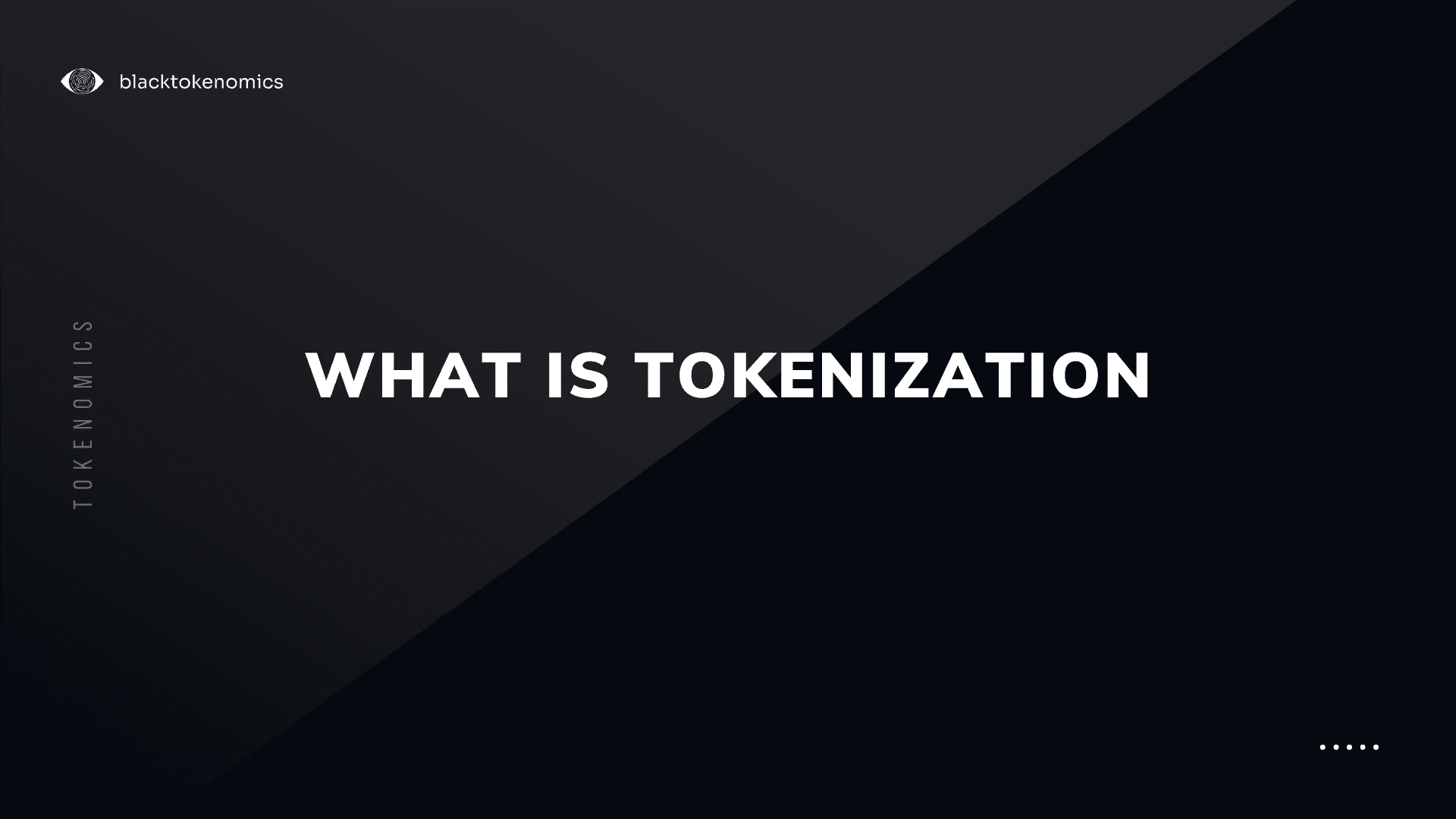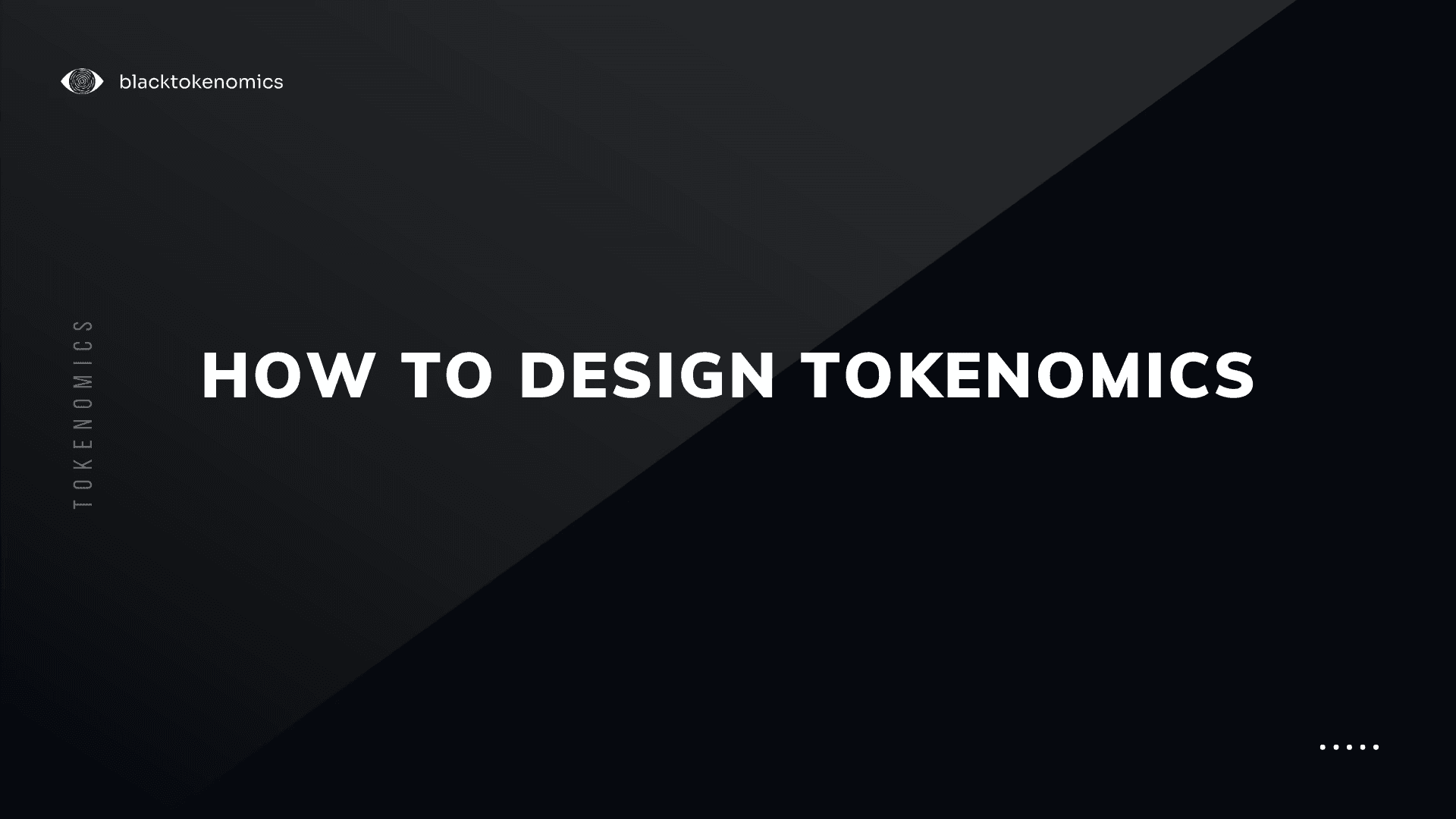
Lisa Dubois
What is tokenomics? It’s the blueprint that determines a cryptocurrency’s economic design, influencing its market value and user incentives. From minting protocols to supply constraints, these rules define how a token operates and succeeds. This guide uncovers the core principles of tokenomics, offering practical insights for those looking to navigate the cryptocurrency market with confidence.
Key Takeaways
Tokenization is a data security method that replaces sensitive information with non-sensitive tokens, maintaining the original format and structure of the data, and provides cost-effective security enhancement.
Types of tokenization vary from high-value to low-value tokens and modern non-cryptographic tokenization, which does not rely on cryptographic methods and can operate in stateless or vaultless systems.
Tokenization plays an essential role in facilitating regulatory compliance, such as PCI DSS, by minimizing the risk of data breaches and reducing the scope and complexity of compliance requirements.
Decoding Tokenization: The Basics

Tokenization, fundamentally, is a data security technique that replaces sensitive information with unique, non-sensitive tokens, effectively masking the original data. This method provides businesses with an additional layer of security surpassing traditional encryption techniques, preventing the storage or transmission of sensitive data in its original form.
The tokenization process, essentially, commences by identifying the sensitive data requiring protection. This data is then replaced with unique symbols, referred to as tokens, which serve as non-sensitive alternatives to the original data. The tokenized data, while still maintaining the format and structure of the original information, is devoid of any intrinsic or exploitable value, thereby making it useless to any unauthorized entity that tries to gain access to it.
A noteworthy feature of tokenization is its cost-effectiveness. It offers the following benefits:
Reduces the need to store sensitive data
Lessens the demand for secure data storage and handling
Economically superior alternative to other security methods like encryption
Defining Tokenized Data
Tokenized data, as the term suggests, is characterized by the unique, non-sensitive tokens that represent sensitive information without revealing it. The process of transforming sensitive data into tokenized data, which can be considered a digital asset, involves replacing the sensitive information with unique identifiers referred to as tokens.
This can be applied to a wide range of sensitive data elements, including personal identification information, primary account number, and social security numbers, as well as cleartext data element, in order to protect credit card data and prevent a data breach.
Tokenization's Role in Protecting Sensitive Information
Tokenization serves an indispensable role in protecting sensitive data. It safeguards data processed by payment processors, like credit card numbers and personal identification information, replacing them with non-sensitive tokens. This ensures that the tokenized data can be stored or transmitted without the risk of exposing the original sensitive information. In other words, tokenization ensures that even if data is intercepted or accessed by unauthorized parties, the data they obtain is meaningless and useless.
The protective nature of tokenization extends to a variety of sensitive information. From credit card numbers, bank account numbers, to personal identifiers like financial records and medical records, a wide range of sensitive data can be securely handled using tokenization. Beyond just safeguarding data, tokenization also serves as a preventative measure against data breaches. By replacing sensitive data with non-sensitive tokens, tokenization mitigates the financial repercussions of a possible breach.
The Tokenization Process Step-by-Step
The tokenization process consists of a well-ordered sequence of actions. To begin with, sensitive data elements are swapped with non-sensitive counterparts, known as tokens. This effectively removes sensitive data from the processing environment. The generation of these tokens involves the use of algorithms, which can include mathematically reversible cryptographic functions, one-way nonreversible cryptographic functions, or various assignment methods.
A crucial aspect of the tokenization process is the use of a secure token vault. This vault serves as the central repository for maintaining the mapping between tokens and the original sensitive data. It facilitates the secure retrieval of sensitive data using the tokens, ensuring that the original data can be accessed only when necessary and by authorized entities.
Unveiling the Types of Tokenization

Diverse and varied as the world of data, so are the types of tokenization. Primarily, tokens can be classified based on their value into high-value tokens and low-value tokens. High-value tokens are utilized as replacements for actual payment card numbers in payment processing systems, while low-value tokens, also replacing primary account numbers (PANs), are employed for different transactional functions.
In addition to this value-based classification, there is another type of tokenization that has been gaining prominence in recent years, known as modern non-cryptographic tokenization. This method involves the generation of tokens using methods that rely on random data generation within stateless or vaultless systems, and do not utilize traditional cryptographic mechanisms.
From High to Low Value Tokens
High-value tokens are utilized as substitutes for major assets, such as payment card information during transactions. They symbolize ownership in high-value assets, encompassing both tangible and intangible assets of substantial value.
On the other hand, low-value tokens, though also substitutes for actual payment card numbers, are typically employed for smaller transactions or less sensitive data. This differentiation in usage between high and low-value tokens lends versatility to the tokenization process and allows it to cater to a range of transactional needs.
Modern Non-Cryptographic Tokenization
Modern non-cryptographic tokenization is a newer form of tokenization that is quickly gaining popularity in the field of data security. This form of tokenization involves the generation of tokens using methods that rely on random data generation within stateless or vaultless systems, and do not utilize traditional cryptographic mechanisms.
The process of non-cryptographic tokenization usually entails the storage of cleartext data and the generation of random tokens that correspond to the original data. More advanced methods, such as stateless or vaultless tokenization, replace sensitive data with non-sensitive data without relying on a centralized token vault. Instead, it involves the use of randomly generated metadata that is securely combined to construct the token.
Tokenization vs. Encryption: A Comparative Analysis
Despite both tokenization and encryption being cryptographic techniques utilized for data security, they possess unique characteristics that differentiate them. Encryption transforms sensitive data into an unreadable format that necessitates a unique decryption key for reverting back to its original form. On the other hand, tokenization substitutes sensitive data with a non-sensitive placeholder or token that lacks extrinsic value or direct association with the original data and cannot be decrypted.
The use of decryption keys is a vital aspect of encryption, as they facilitate the reversal of encryption, thereby rendering encrypted data readable. Encryption digital tokenization, on the other hand, combines the strengths of both encryption and tokenization. While tokenization does not involve the use of decryption keys, as it replaces sensitive data with a non-sensitive token that cannot be reversed to obtain the original information, this approach helps mitigate the risks associated with managing decryption keys.
Another key difference between tokenization and encryption lies in how they handle data integrity and format. Tokenization preserves the format and integrity of the original data uniquely. It substitutes sensitive information with tokens that match the original data’s format, ensuring that business processes that depend on data format continue to function without disruption.
Tokenization vs. Encryption: A Comparative Analysis
Decryption keys function as a cryptographic mechanism to undo the process of encryption. They are essential in transforming encrypted data, known as ciphertext, back to its original and comprehensible form. However, tokenization does not necessitate a decryption key due to its utilization of non-decryptable information in token generation.
The absence of decryption keys in tokenization enhances its security by mitigating the risk of key theft or loss and preventing the transmission of sensitive data.
Preserving Data Integrity and Format
Contrary to encryption, which tends to modify the format and structure of the data during the process, tokenization maintains the original structure of data by using tokens as pointers to the sensitive data. The process of mapping from the original data to a token is designed to make it challenging to reverse-engineer the original data without access to the tokenization system.
This unique characteristic of tokenization is particularly advantageous for businesses that rely on maintaining the integrity and format of their data.
Tokenization vs Tokenomics
While the terms ‘tokenization’ and ‘tokenomics’ may sound similar, they refer to distinctly different concepts. Tokenization in data security is centered around the digitalization and protection of sensitive data through the substitution with a token. On the other hand, tokenomics in cryptocurrency pertains to the economic elements of a cryptocurrency, including its dissemination, worth, and functionality.
Tokenization and tokenomics may intersect in instances where tokenization is used to represent assets in the digital economy. Here, tokenization is the process of creating digital tokens on a distributed ledger or blockchain to represent either digital or physical assets. These tokens can be governed by programmed rules in a self-governed economic system.
Notably, tokenization has facilitated organizations in navigating regulatory frameworks by enabling them to meet global data protection standards and mitigating risks associated with sensitive data. On the other hand, tokenomics encompasses the economic properties and characteristics inherent to a cryptocurrency or blockchain project, encompassing the incentives for token distribution and the utility of the token.
The Vital Role of Tokenization in PCI DSS Compliance
Tokenization serves an essential role in PCI DSS compliance. PCI DSS, Payment Card Industry Data Security Standard, is a cybersecurity standard that requires organizations to protect payment card data. Tokenization contributes to achieving PCI DSS compliance by:
Substituting sensitive payment and cardholder data with non-sensitive tokens
Lowering the risk of data breaches
Reducing the scope of PCI DSS requirements.
Through ensuring that card data never interacts with the merchant’s servers, tokenization significantly narrows the compliance scope. This not only simplifies the compliance process but also expedites audits and reduces compliance costs.
Moreover, tokenization enhances data protection measures by:
Making it more difficult for hackers to access sensitive information, such as credit card numbers
Protecting sensitive data
Addressing specific PCI DSS requirements, such as the encryption of sensitive cardholder data elements.
Reducing Scope for Compliance
Tokenization decreases the scope for PCI DSS compliance by ensuring that card data never comes into contact with your servers and by removing the necessity to store electronic cardholder data in your environment. This not only minimizes the amount of sensitive data that needs to be stored, but also expedites audits, leading to faster compliance and lower costs.
Enhancing Data Protection Measures
Tokenization enhances data protection by replacing sensitive information with non-sensitive tokens. This effectively mitigates the likelihood of unauthorized access or data breaches, making any intercepted data irrelevant to hackers. A wide range of sensitive information, such as bank accounts, financial statements, and medical records, can be securely handled using tokenization.
By substituting sensitive information with non-sensitive tokens, tokenization also serves as a preventative measure against data breaches. It mitigates the financial repercussions of a possible breach, which includes:
significant costs associated with investigation and containment
legal repercussions
harm to reputation
potential credit-rating declines.
Real-World Applications of Tokenization

Beyond its fundamental role in data security, tokenization has extensive real-world applications. In the realm of e-commerce and payment gateways, tokenization enhances the security of transactions by:
Substituting sensitive payment data, such as customer card details, with non-sensitive tokens supplied by payment service providers
Safeguarding sensitive data from breaches and unauthorized access
Improving customer experience by enabling one-click transactions and streamlining the online purchasing process.
In the digital economy, tokenization has an increasingly important role in representing assets. Tokenization allows for the easy trading, division, and negotiation of these tokens across digital platforms. Some examples of assets that can be tokenized include:
Real estate
Agricultural or mining commodities
Analog artworks
Digital media platforms
Company shares
Collectibles
Tokenization in E-commerce and Payment Gateways
Tokenization is widely used in e-commerce and payment gateways to enhance security and improve customer experience. By substituting sensitive payment data, such as customer card details, with non-sensitive tokens, it ensures that actual payment data is securely stored by the payment processor and not handled by the merchants. This not only enhances data security but also streamlines the customer payment experience, allowing for subsequent purchases without the need to re-enter payment information.
In addition to enhancing security, tokenization also serves as a preventative measure against payment fraud. By securely storing card information in a ‘token vault’ and using tokens for transaction authorization instead of the actual data, it adds a significant layer of security, making it more difficult for fraudsters to access sensitive payment information.
Asset Tokenization in the Digital Economy
In the digital economy, tokenization plays a significant role in representing assets. It involves the creation of a digital representation of an asset that facilitates easy negotiation, division, and trading. These digital tokens symbolize tangible assets such as real estate or intangible assets of substantial value, enabling secure and efficient transactions.
Tokenization offers a wide array of benefits, including:
Improved security and efficiency in transactions
Enhanced capital efficiency
Heightened accessibility to investors globally
Minimized costs
Improved liquidity
Enhanced efficiency
Expanded global market access
With such a wide array of benefits, it is clear that tokenization has a crucial role to play in the digital economy.
Benefits of Tokenization Beyond Security
While the primary benefit of tokenization is its role in bolstering data security, it also provides several other advantages. Tokenization can significantly streamline business processes by eliminating the necessity to gather and retain sensitive data, thereby decreasing paperwork and facilitating streamlined payment processes.
Furthermore, tokenization assists in cost-effective data management by:
Decreasing the amount of sensitive data that needs to be stored
Significantly reducing data-storage requirements
Helping manage and reduce data storage costs.
Beyond these operational advantages, tokenization also plays a key role in helping businesses navigate regulatory frameworks.
By meeting global data protection standards and mitigating risks associated with sensitive data, tokenization helps organizations adhere to compliance requirements and reduces the financial and reputational risks associated with data breaches.
Streamlining Business Processes with Tokenization
Tokenization has a profound impact on business processes. It offers several benefits, including:
Substituting sensitive data with non-sensitive tokens, eliminating the need to gather and retain sensitive data
Reducing paperwork and facilitating streamlined payment processes
Enhancing operational efficiency by improving transparency and traceability
Creating efficiencies in back- and middle-office operations
Tokenization is a powerful tool that can greatly improve the efficiency and security of business processes.
In addition to streamlining processes, tokenization also enhances customer experience. In the realm of e-commerce, for instance, tokenization enables:
One-click transactions by securely storing user payment data as tokens
Simplifies the purchasing process
Boosts customer trust by ensuring the security of their payment information
Cost-Effective Data Management
In terms of data management, tokenization offers cost-effective solutions. By replacing sensitive data with non-sensitive tokens, it significantly reduces the amount of sensitive data that needs to be stored.
This not only decreases the demand for secure data storage and handling but also diminishes the need for data audits, thus lowering compliance costs and regulatory obligations.
Navigating Regulatory Frameworks with Tokenization
In a progressively regulated business environment, tokenization acts as a crucial tool for organizations to navigate regulatory frameworks. By conforming to global data protection standards, such as GDPR and PCI DSS, tokenization ensures that businesses are not just compliant but also secure.
Tokenization plays a vital role in mitigating risk by:
Substituting sensitive information with non-sensitive tokens
Enhancing the security of sensitive data
Aiding businesses in adhering to PCI standards
Enhancing customer trust by providing better protection for their information.
In addition to these benefits, tokenization also offers cost and efficiency advantages. By reducing the volume of sensitive data within the system, tokenization facilitates the attainment of PCI DSS compliance, thus reducing the cost and complexity of audits.
Meeting Global Data Protection Standards
Tokenization can assist organizations in meeting global data protection standards such as:
GDPR
HIPAA
CCPA
PCI DSS
By safeguarding sensitive data and minimizing its vulnerability, tokenization not only enhances data security but also ensures compliance with industry regulations.
Tokenization also aids organizations in meeting specific GDPR compliance requirements and addressing requests from data subjects. It involves a non-destructive method of obscuring data, which can be recovered using a secure key. This makes tokenization a preferred method for ensuring data privacy and security, while also meeting regulatory compliance.
Tokenization as a Tool for Risk Mitigation
Tokenization serves as a key tool for risk mitigation. By replacing sensitive information with non-sensitive tokens, it effectively mitigates the likelihood of unauthorized access or data breaches, making any intercepted data irrelevant to hackers. Moreover, tokenization also mitigates the financial repercussions of a possible breach, which includes:
significant costs associated with investigation and containment
legal repercussions
harm to reputation
potential credit-rating declines
Summary
In conclusion, tokenization is an innovative and effective method of data security that not only safeguards sensitive information but also offers numerous other benefits. From streamlining business processes and reducing data storage costs to meeting global data protection standards and mitigating risks, tokenization is truly a game-changer in the realm of data security. As we continue to navigate the digital age, the importance of tokenization will only continue to grow.
Read also our other articles:
Lisa Dubois
Armed with a Business Management degree and blockchain expertise, Lisa customizes our services to each client’s needs. From partnerships to seizing opportunities, Lisa drives our mission, connecting visionary concepts to real-world success.



